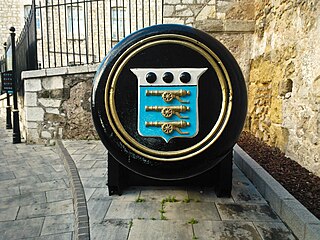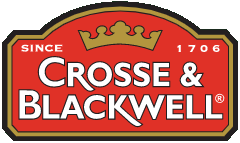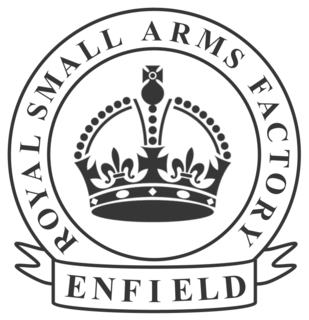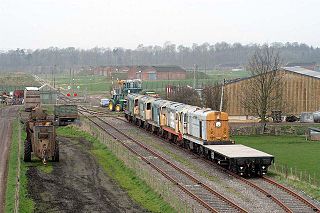
The Bren gun was a series of light machine guns (LMG) made by Britain in the 1930s and used in various roles until 1992. While best known for its role as the British and Commonwealth forces' primary infantry LMG in World War II, it was also used in the Korean War and saw service throughout the latter half of the 20th century, including the 1982 Falklands War. Although fitted with a bipod, it could also be mounted on a tripod or be vehicle-mounted.

The Board of Ordnance was a British government body. Established in the Tudor period, it had its headquarters in the Tower of London. Its primary responsibilities were 'to act as custodian of the lands, depots and forts required for the defence of the realm and its overseas possessions, and as the supplier of munitions and equipment to both the Army and the Navy'. The Board also maintained and directed the Artillery and Engineer corps, which it founded in the 18th century. By the 19th century, the Board of Ordnance was second in size only to HM Treasury among government departments. The Board lasted until 1855, at which point it was disbanded.

Woolwich Dockyard was an English naval dockyard along the river Thames at Woolwich in north-west Kent, where many ships were built from the early 16th century until the late 19th century. William Camden called it 'the Mother Dock of all England'. By virtue of the size and quantity of vessels built there, Woolwich Dockyard is described as having been 'among the most important shipyards of seventeenth-century Europe'. During the Age of Sail, the yard continued to be used for shipbuilding and repair work more or less consistently; in the 1830s a specialist factory within the dockyard oversaw the introduction of steam power for ships of the Royal Navy. At its largest extent it filled a 56-acre site north of Woolwich Church Street, between Warspite Road and New Ferry Approach; 19th-century naval vessels were fast outgrowing the yard, however, and it eventually closed in 1869. The former dockyard area is now partly residential, partly industrial, with remnants of its historic past having been restored.

The Browning Automatic Rifle (BAR) is a family of US automatic rifles and machine guns used by the United States and numerous other countries during the 20th century. The primary variant of the BAR series was the M1918, chambered for the .30-06 Springfield rifle cartridge and designed by John Browning in 1917 for the American Expeditionary Forces in Europe as a replacement for the French-made Chauchat and M1909 Benét–Mercié machine guns that US forces had previously been issued.

The Royal Arsenal, Woolwich is an establishment on the south bank of the River Thames in Woolwich in south-east London, England, that was used for the manufacture of armaments and ammunition, proofing, and explosives research for the British armed forces. It was originally known as the Woolwich Warren, having begun on land previously used as a domestic warren in the grounds of a Tudor house, Tower Place. Much of the initial history of the site is linked with that of the Office of Ordnance, which purchased the Warren in the late 17th century in order to expand an earlier base at Gun Wharf in Woolwich Dockyard.

Crosse & Blackwell is a British food brand. The original company was established in London in 1706, then was acquired by Edmund Crosse and Thomas Blackwell in 1830. It became independent until it was acquired by Swiss conglomerate Nestlé in 1960.

The Royal Small Arms Factory (RSAF) was a UK government-owned rifle factory in Enfield, adjoining the Lee Navigation in the Lea Valley. The factory produced British military rifles, muskets and swords from 1816. It closed in 1988, but some of its work was transferred to other sites.
Royal Ordnance Factories (ROFs) was the collective name of the UK government's munitions factories during and after the Second World War. Until privatisation, in 1987, they were the responsibility of the Ministry of Supply, and later the Ministry of Defence.

Woolwich Garrison is a garrison or station of the British Army. Geographically it is in Woolwich, in the London Borough of Greenwich. In terms of command, it is within the Army's London District.

Branston is an English food brand best known for the original Branston Pickle, a jarred pickled chutney first made in 1922 in the village of Branston near Burton upon Trent, Staffordshire by Crosse & Blackwell. The Branston factory proved to be uneconomical, and production was moved to Crosse & Blackwell subsidiary, E Lazenby & Sons in Bermondsey, London, where it invested in new buildings in 1924 and 1926, which remained in use until 1969.

The Royal Army Ordnance Corps (RAOC) was a corps of the British Army. At its renaming as a Royal Corps in 1918 it was both a supply and repair corps. In the supply area it had responsibility for weapons, armoured vehicles and other military equipment, ammunition and clothing and certain minor functions such as laundry, mobile baths and photography. The RAOC was also responsible for a major element of the repair of Army equipment. In 1942 the latter function was transferred to the Royal Electrical and Mechanical Engineers (REME) and the vehicle storage and spares responsibilities of the Royal Army Service Corps were in turn passed over to the RAOC. The RAOC retained repair responsibilities for ammunition, clothing and certain ranges of general stores. In 1964 the McLeod Reorganisation of Army Logistics resulted in the RAOC absorbing petroleum, rations and accommodation stores functions from the Royal Army Service Corps as well as the Army Fire Service, barrack services, sponsorship of NAAFI (EFI) and the management of staff clerks from the same Corps. On 5 April 1993, the RAOC was one of the corps that amalgamated to form The Royal Logistic Corps (RLC).

Branston is a village and civil parish in Staffordshire, England. At the 2001 census, the population was 6,540, increasing to 6,749 at the 2011 Census.

H.M. Factory, Gretna was the United Kingdom's largest cordite factory in World War I. The government-owned facility was adjacent to the Solway Firth, near Gretna, Dumfries and Galloway. It was built by the Ministry of Munitions in response to the Shell Crisis of 1915. The capital cost was £9,184,000 and it covered 9000 acres. The cost of working it from September 1916 to September 1918 was £12,769,000, during which time it produced cordite valued at £15,000,000, though it was claimed that without it the cordite would have had to be imported from the USA at a cost of £23,600,000.
Royal Ordnance Factory (ROF) Nottingham opened in 1936 in The Meadows, Nottingham, United Kingdom. It was one of a number of Royal Ordnance Factories created in the build up to World War II. During the war the site employed up to four thousand workers. The factory was closed in 2001.

Bramley Training Area is a British Army training camp, located south of the village of Bramley, Hampshire. Opened during World War I as an ammunition depot, the site now comprises a field training area and an Army Reserve Centre at Lapraik House.

A Royal Naval Armament Depot (RNAD) is an armament depot dedicated to supplying the Royal Navy. They were sister depots of Royal Naval Cordite Factories, Royal Naval Torpedo and Royal Naval Mine Depots. The only current RNAD is RNAD Coulport, which is the UK Strategic Weapon Facility for the Trident Missile System; with many others being retained as tri-service 'Defence Munitions' sites.
ROF Rotherwas was a Royal Ordnance Factory filling factory, No 4, located in Lower Bullingham, Herefordshire, England.
National Filling Factory, Banbury, officially called National Filling Factory No. 9. was a British Ministry of Munitions filling factory, constructed during World War I and located in Banbury, Oxfordshire. The production of filled shells began in April 1916 and ended when the factory closed in 1924

The Naval Ordnance Stores Department, was a former department of the Admiralty responsible for the management of naval ordnance storage facilities and depots of the Royal Navy the department was managed by a Superintendent of Stores supported by various deputy and assistant superintendents's it existed from 1891 to 1918 when it was replaced by the Armament Supply Department.

MoD Feltham is a secure 30-acre (12 ha) military installation in Feltham, Middlesex.

















